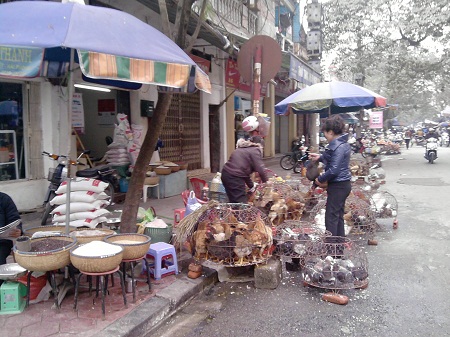4:55 PM, 12/09/2012(Chinhphu.vn) - Avian flu has appeared in 10 communes and towns of Son Duong district and impressive (Tuyen Quang TP), Tuyen Quang. Whole poultry must be destroyed more than 17,000 children.Shortly after the discovery of bird flu, Tuyen Quang province has established Steering Committee animal disease prevention, poultry supply, guidance and direction in conducting destroy the whole disease in poultry regulations; sanitation and disinfection, disinfection of infected areas; inform the neighboring district to actively prevent.
Mr. Nguyen Van Cong, director of the provincial veterinary Tuyen Quang province, said: "Currently we are implementing urgent and drastic measures in response to the epidemic, organized destruction of all infected poultry and poultry around households if farming is empty, prohibit purchase, sale, transport, slaughter and eat sick poultry, mobilize people captive birds in cages, implement strict hygiene and disinfection disinfection. For where outbreaks have occurred disinfected every day. "
According to the Department of Animal Health (MARD), in addition to Tuyen Quang, the country was six provinces with avian influenza within 21 days of Ha Tinh, Ninh Binh, Nam Dinh, Bac Kan, Quang Ngai and Peace.
Of the disease in poultry, cattle in general across the country in five provinces: Dak Lak, Nghe An, Cao Bang, Bac Can and Can Tho have PRRS less than 21 days.
* Before the diseases of cattle, poultry complicated, Hanoi has actively planning prevention; while additional funding over 11.5 billion for prevention and control of animal disease and poultry.Accordingly, nearly 2.65 billion to buy vaccines blue ear disease in pigs, 2.7 billion to buy vaccines and swine cholera, nearly 1.1 billion purchase H5N1 vaccine ... http://baodientu.chinhphu.vn/Home/Tuyen-Quang-xuat-hien-dich-cum-gia-cam-tai-11-xa/20129/148616.vgp



 Kamalini Lokuge, wearing the hat, with other Médecins Sans Frontières volunteers and a family in Uganda who lost 11 members to the deadly virus.
Kamalini Lokuge, wearing the hat, with other Médecins Sans Frontières volunteers and a family in Uganda who lost 11 members to the deadly virus. 